About the Author: Gerald Young is a Senior Research Analyst with MissionSquare Research Institute (formerly the Center for State and Local Government Excellence).
While COVID-19 has undoubtedly been the most significant factor impacting employment over the past year, many local governments are also struggling with recruitment challenges and increased retirements. The local government data from the 2021 State and Local Government Workforce Survey conducted by MissionSquare Research Institute (formerly SLGE), IPMA-HR, and NASPE, sheds light on strategies to improve outreach to prospective candidates, build a more resilient workforce, and meet the changing interests of new generations of employees.
The challenges can best be summarized in data on recruitment and retirement.
More than half of the 288 HR leaders that responded to the survey indicated that positions in health care, policing, skilled trades and engineering were hard to fill, with several positions yielding fewer qualified applicants than there were positions available.
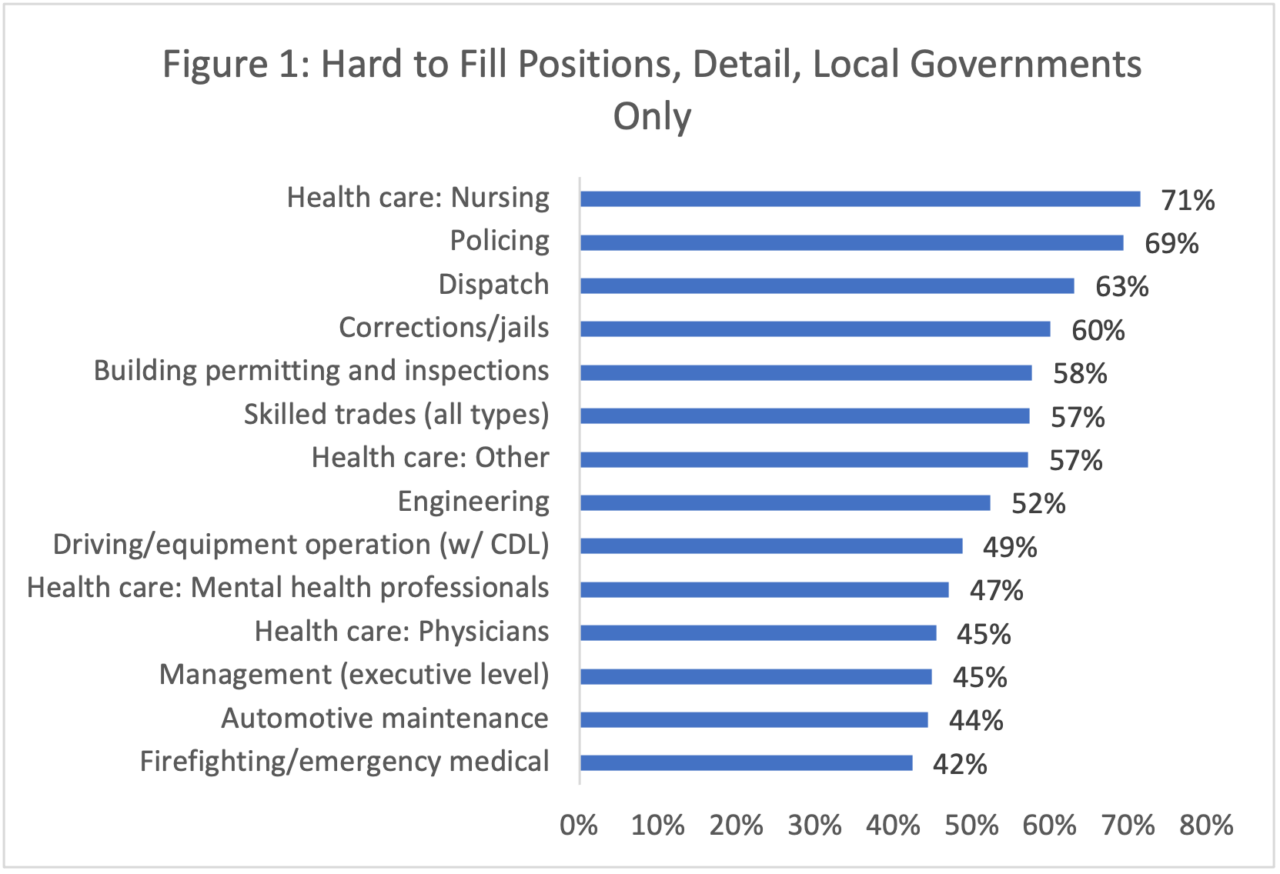

Safety, health and development positions exhibit the most recruitment challenges, but information technology, maintenance, transit, and utility positions were also reported as hard to fill by more than 30% of respondents. Such difficulties reflect not just the overall job market but also the perception that salaries in the public sector may not be as competitive with those offered by the private sector – a perception echoed by the survey respondents themselves.
Regarding retirements, while the 2008-9 recession had led to a larger share of employees postponing retirement, in this year’s survey, more indicated that employees were accelerating those plans.
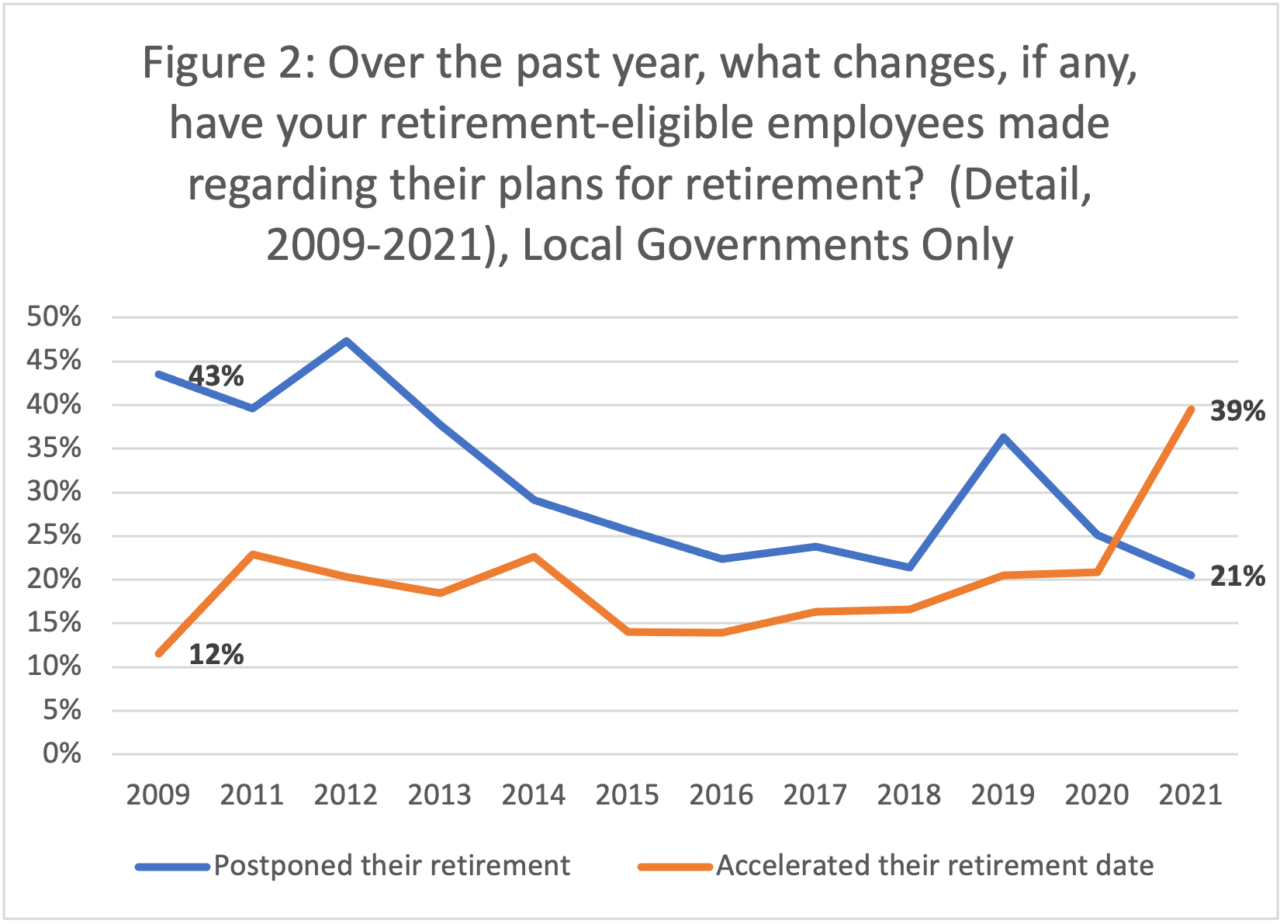
Combined with reports that the most significant wave of Baby Boom retirements is still to come, this means that governments are being squeezed between a difficult recruiting market and an aging workforce.
So what steps are employers taking to deal with this?
First, although the initial response to COVID-19 may have been to freeze, furlough, or lay off some staff, there are sizeable percentages that have returned to hiring.
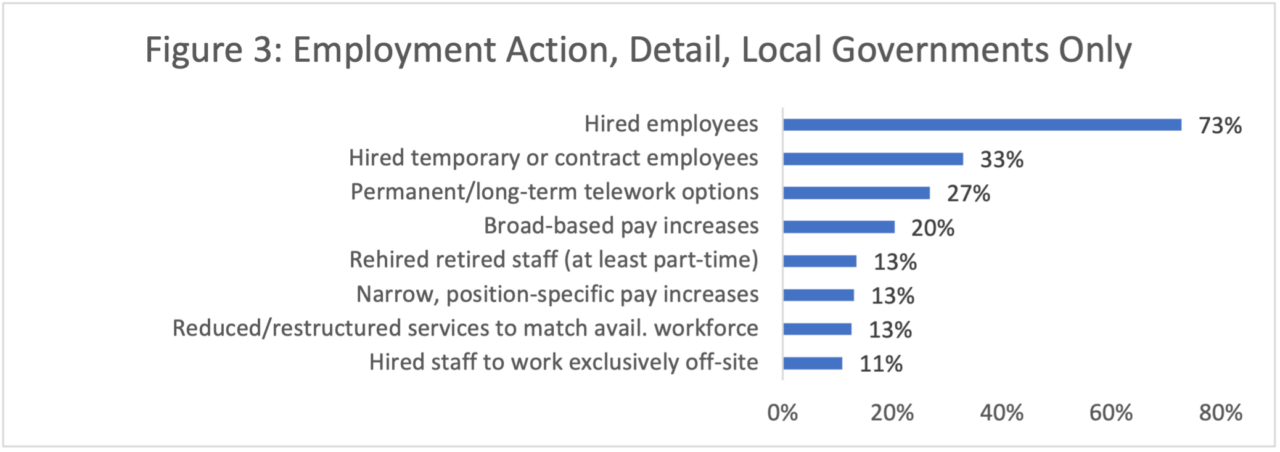
As they’re looking to fill gaps in their organizations, most local governments are doing so via online job postings (65%) or social media (59%). However, new approaches are making inroads as well, such as video advertising campaigns (7%) and artificial intelligence for applicant screening (10%).
But attracting and retaining talented employees involves a range of policies, benefits, and ongoing programs.
The most visible of these in the past year was some form of flexible employment practices. Among all the survey respondents, regular telework was much more prevalent among state-level employers (71%) and those with more than 2,500 full-time equivalent employees (81%). However, the full range of flexible arrangements also includes alternate work schedules, flexible hours, and job sharing. The share indicating they were not offering any flexibility dropped from 33% of local governments in 2018 to 18% in 2021.
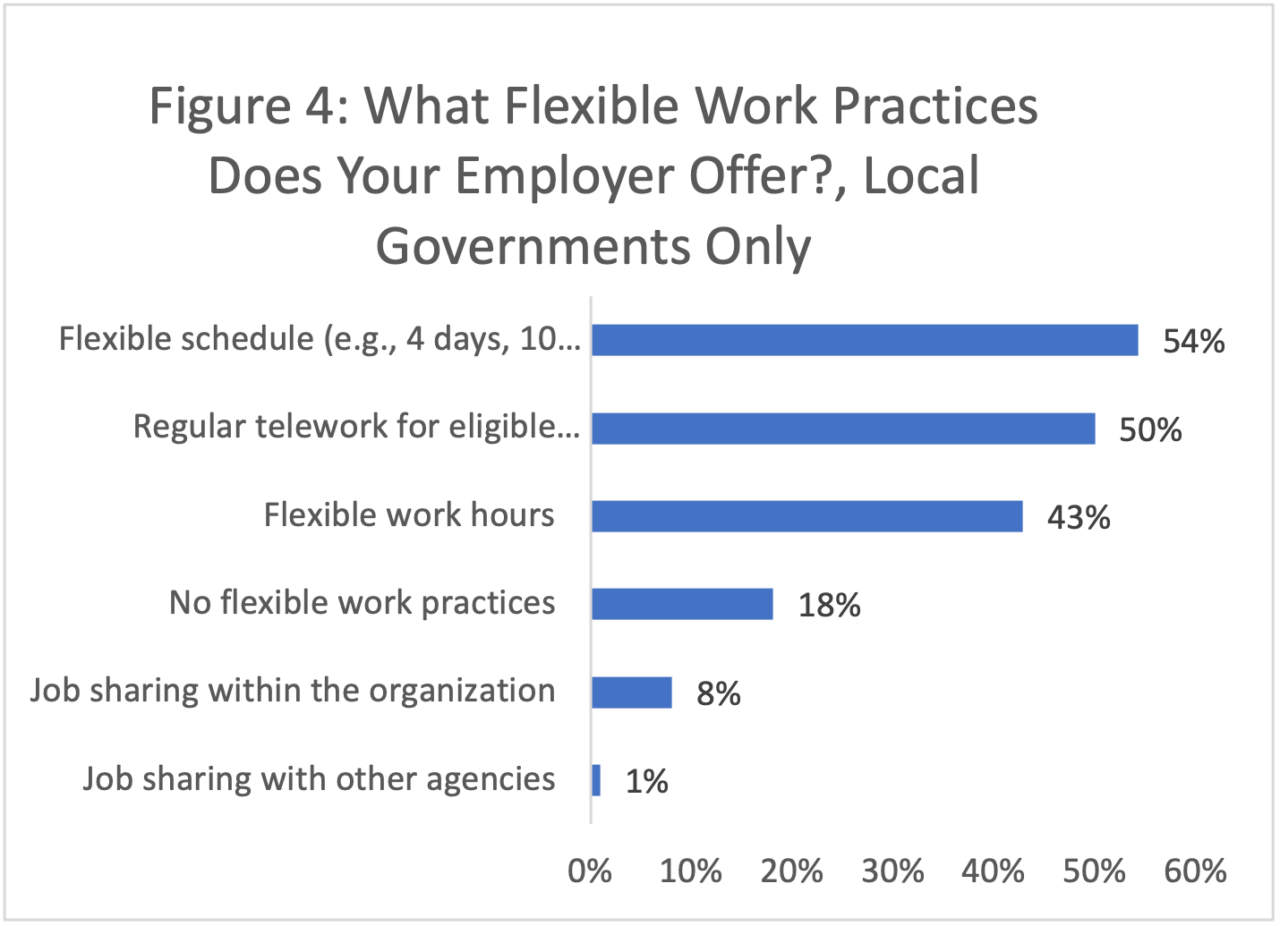
Staff sharing and cross-training are not as common as telework, but case studies have pointed to staffing efficiencies, particularly in smaller jurisdictions where it may be difficult to maintain regular in-house staffing for more specialized positions.
Retention programs show a particular emphasis on wellness – from employee assistance programs (92%) to financial wellness training (33%) or various forms of paid leave benefits. Employee training and development are also a priority, both for helping newer employees build competencies and to enable succession planning in response to the current and anticipated waves of retirements.
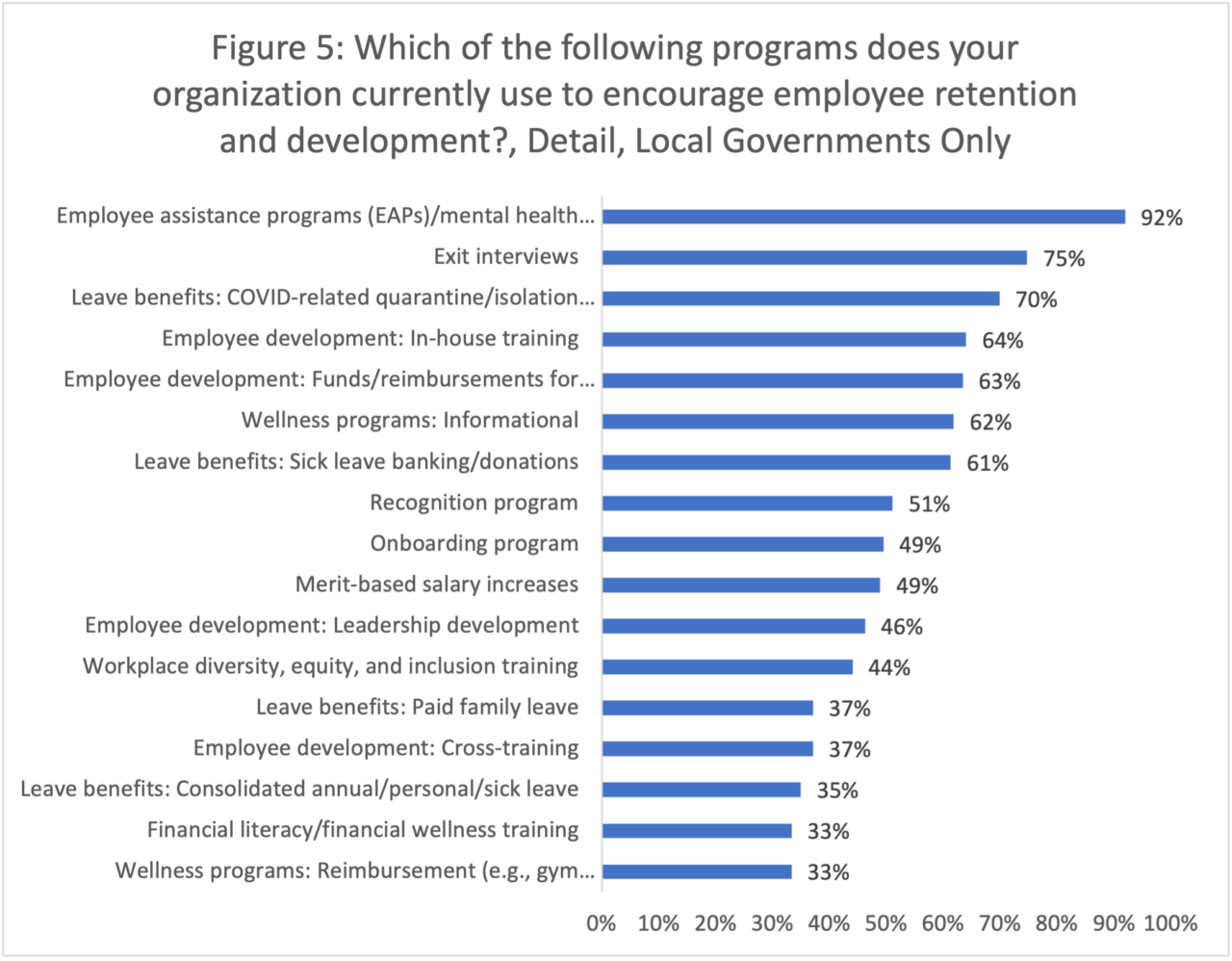
For a more complete picture of the 2021 workforce, including changes to health coverage and retirement benefits, the competitiveness of government compensation, and pending organizational priorities, please download the full workforce survey report.









